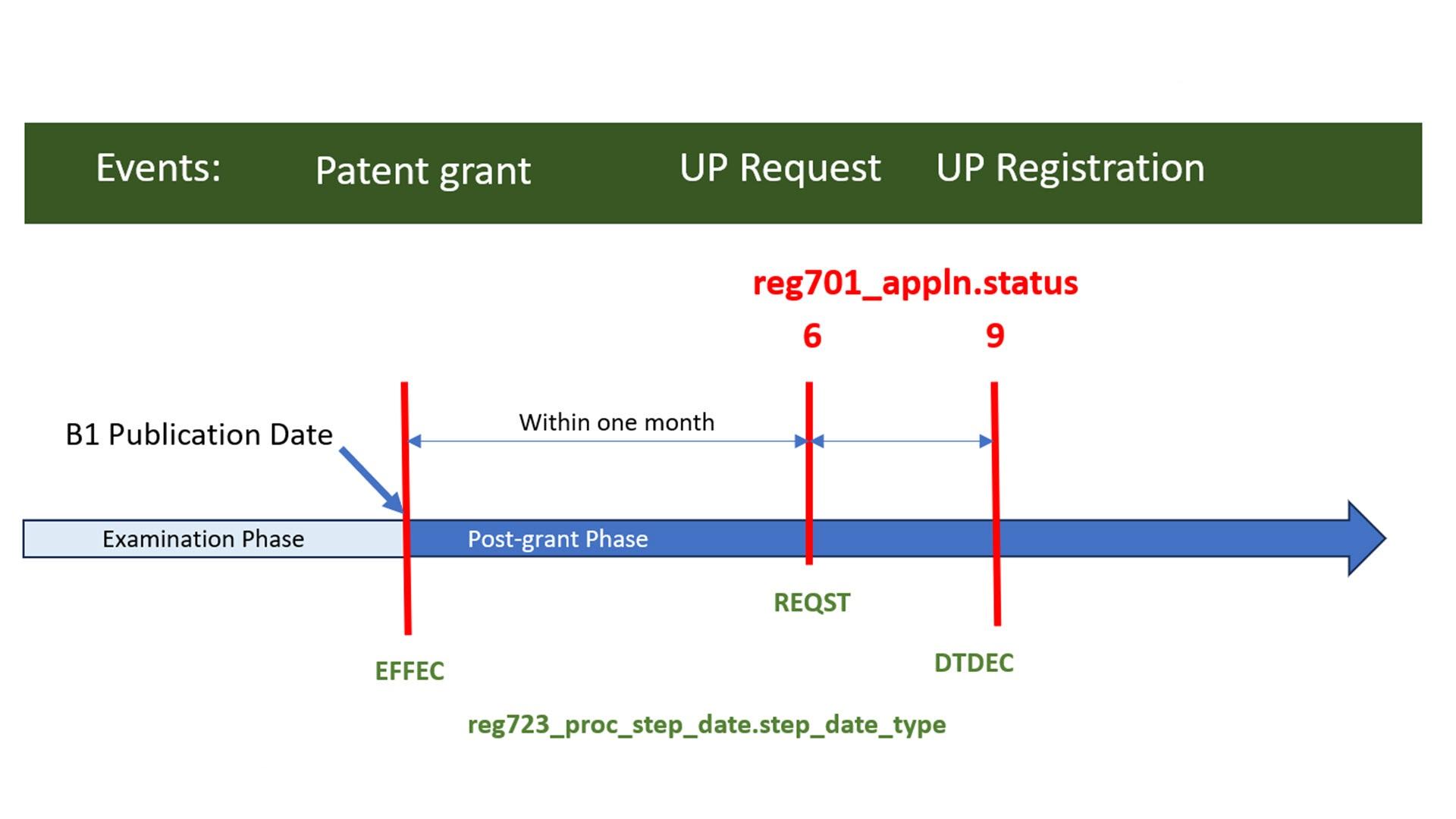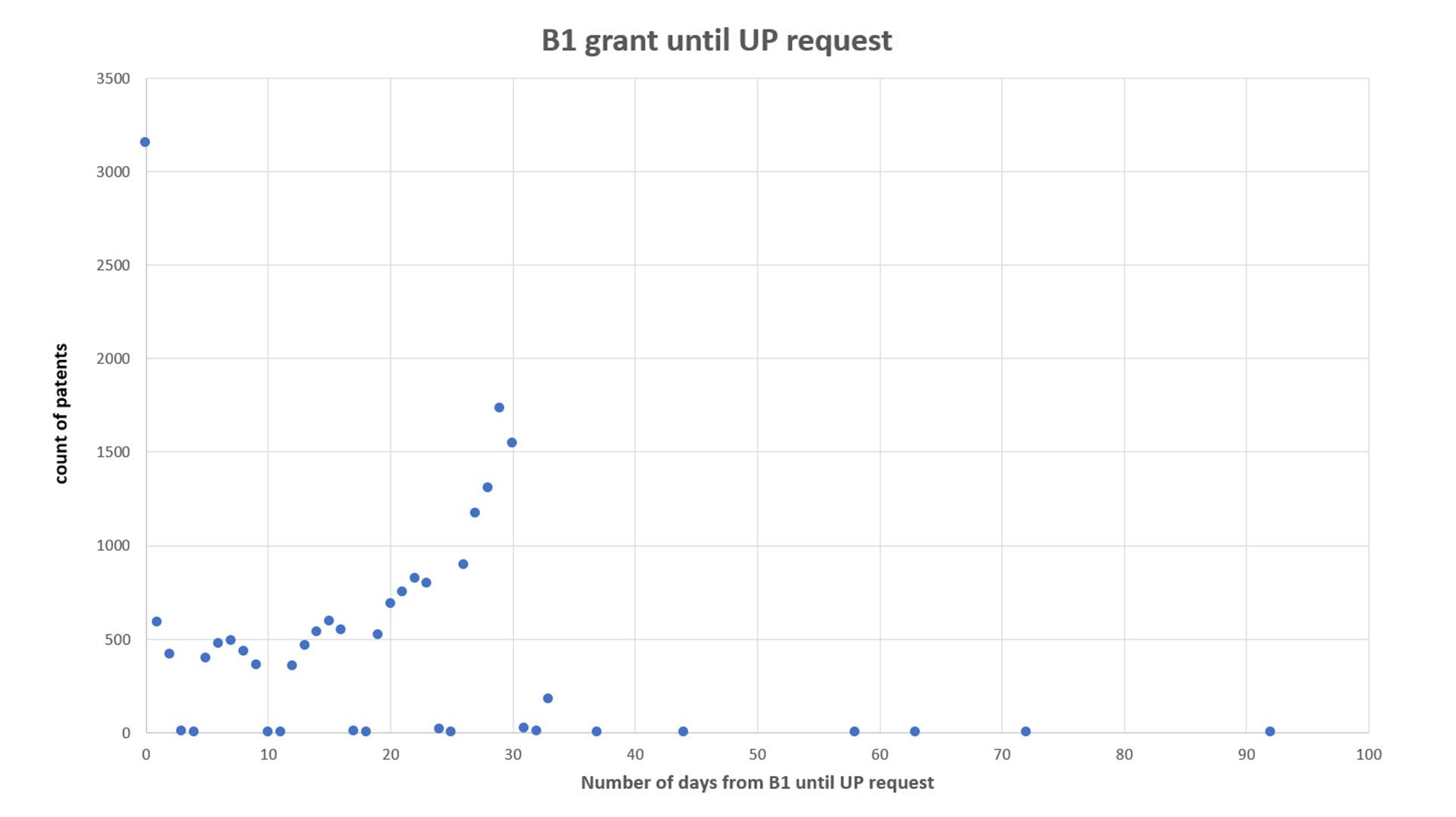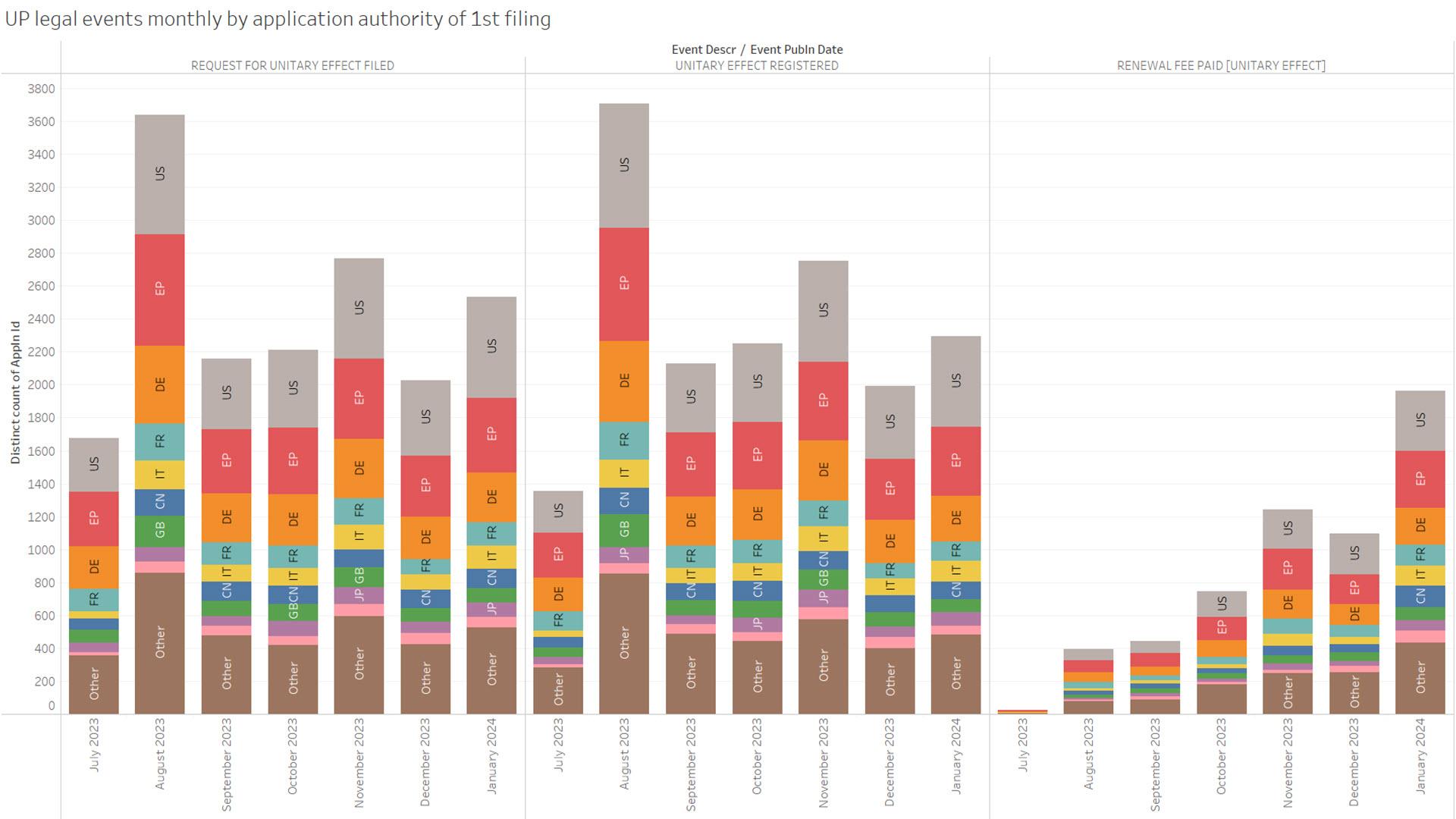Analysing Unitary Patent data in the PATSTAT EP Register
An overview of UP-related extensions in the PATSTAT 2024 spring edition
The PATSTAT EP Register extensions introduced in the 2024 spring edition now make it possible to analyse data on European patents with unitary effect (Unitary Patents/UP). Read on for further insights into the UP filings that can be obtained from PATSTAT Global.
As the name indicates, the PATSTAT EP Register contains bibliographic, procedural and legal event data on European patents taken from the European Patent Register. It consists of a set of tables that follow a relational database schema whereby tables can be connected to each other.
The table names start with reg followed by three digits, an underscore and a text string indicating the content of the table (e.g., reg101_appln). The previous edition (autumn 2023) featured the tables starting with reg1, reg2, reg3, or reg4. With the 2024 spring edition, the following set of new tables featuring names starting with reg7 have been introduced for UP data:
- reg701_appln
- reg705_places_of_business
- reg707_parties
- reg711_licensee
- reg712_licensee_states
- reg714_dates
- reg721_proc_step
- reg722_proc_step_text
- reg723_proc_step_date
- reg731_event_data
- reg741_appln_status
- reg742_event_text
The main UP-related table of the PATSTAT EP Register is reg701_appln, which contains all European patents from the UP chapter of the EP Register. All of these European patents have a Unitary Patent status. The table reg701_appln shown below features a summary of the following statuses (the value of the status_text attribute can be found in the concordance table reg741_appln_status):
|
status |
status_text |
count |
|---|---|---|
|
9 |
Unitary effect registered |
19769 |
|
6 |
Request for unitary effect filed |
443 |
|
4 |
Request for unitary effect withdrawn |
26 |
|
5 |
Request for unitary effect rejected |
12 |
Fig. 1: Summary of statuses in table reg701_appln.
The UP procedure (see Fig. 2) can start once the patent has been granted. From the issuance of the decision to grant the European patent (EPO form 2006A) until one month after the publication date of the B1 document, the EP proprietor can request unitary effect. If the formal requirements are fulfilled, the EPO will register unitary effect. The legal effect date of the European patent with unitary effect is the date of publication of the B1 document.
 Fig. 2: Overview of Unitary Patent procedure
Fig. 2: Overview of Unitary Patent procedure
If the requirements are not fulfilled, then the request for unitary effect is rejected. The patent proprietor may also withdraw their request at any time as long as no decision on its registration or rejection has been taken.
The table reg701_appln (Fig. 1) shows that most requests for unitary effect result in a registration (February 2024:19 769 registrations). Requests for unitary effect have been filed for 443 European patents, but decisions on the registration of unitary effect have not yet been taken. In 26 cases, proprietors withdrew their requests for unitary effect, while the EPO rejected such requests for 12 European patents.
The tables reg721_proc_step and reg723_proc_step_date contain detailed UP procedural data and specific legal status dates. This data can be used to count the number of days between procedural dates like the B1 publication date, the UP request date and the UP registration date. Fig. 3 shows a histogram of the time delay between the patent grant date and the unitary request date.
 Fig. 3: Time span between patent grant date and unitary request date
Fig. 3: Time span between patent grant date and unitary request date
Most requests are filed immediately following the B1 publication and almost 100% are filed in the first month after the grant. The time span between request date and registration date is shown in Fig. 4. 50% of registrations are completed within a week of the request, while 95% of positive decisions are taken after 20 days.
 Fig. 4: Time span between the request date for unitary effect and its registration date
Fig. 4: Time span between the request date for unitary effect and its registration date
Figures 5 and 6 provide insights into the most frequent UP-related legal events taken from PATSTAT Global.
PATSTAT Global contains bibliographical data on over 100 million patent documents from leading industrialised and developing countries. It also includes legal event data from more than 40 patent authorities featured in the EPO worldwide legal event data (INPADOC) and allows the statistical analysis of non-EP data.
As shown in figures 5 and 6, unitary effect has been requested for over 2 000 applications per month until January 2024. According to Fig. 5, most of the applications for which unitary effect was requested were first filed in the United States, with the EPO, and in Germany. First applicants mostly came from Germany, the United States and France, as shown in Fig. 6.
 Fig. 5: Monthly number of applications per UP-related legal event and the application authority of the first filing
Fig. 5: Monthly number of applications per UP-related legal event and the application authority of the first filing
 Fig. 6: Monthly number of applications per UP-related legal event and the country of the first applicant
Fig. 6: Monthly number of applications per UP-related legal event and the country of the first applicant
Keywords: PATSTAT, unitary patent, legal event